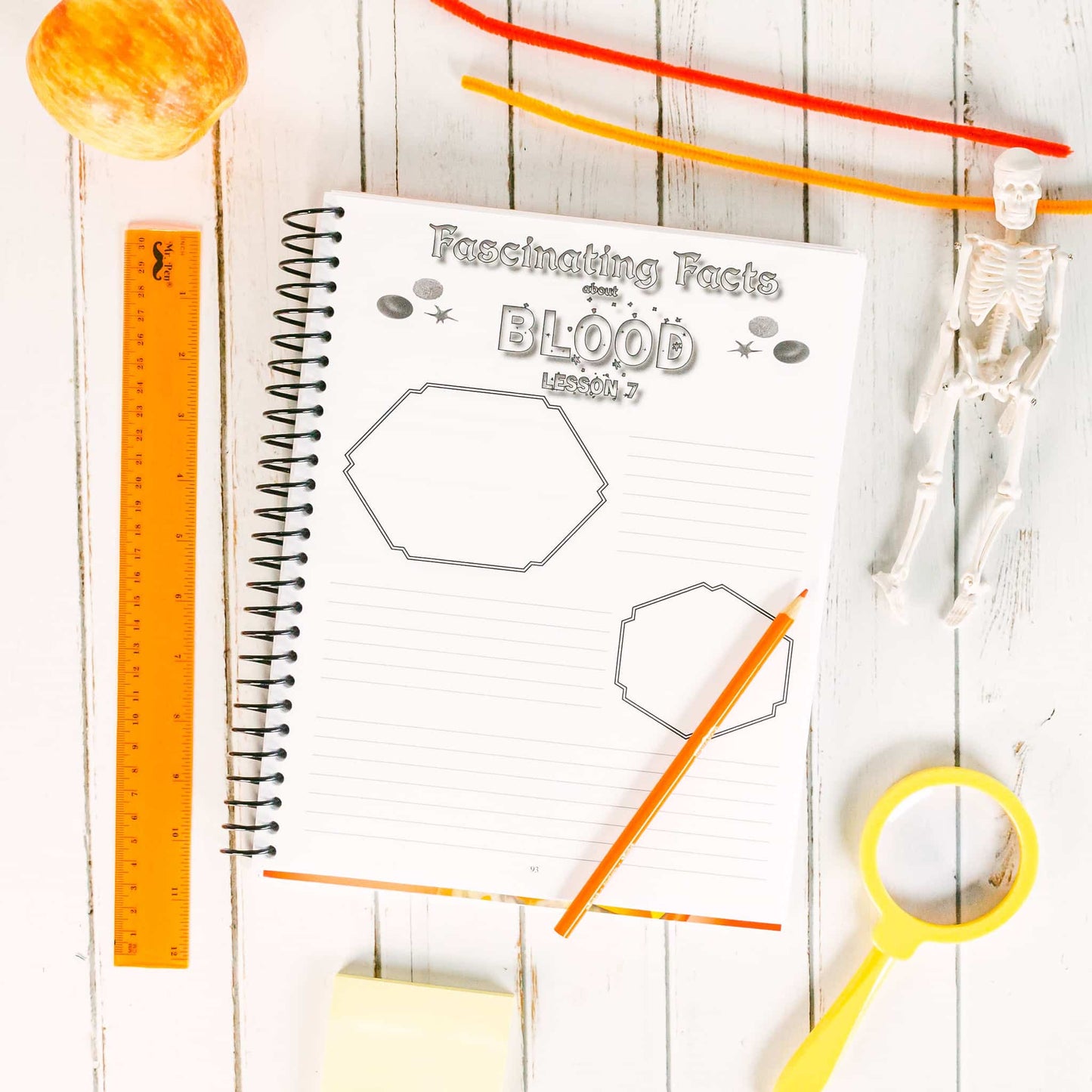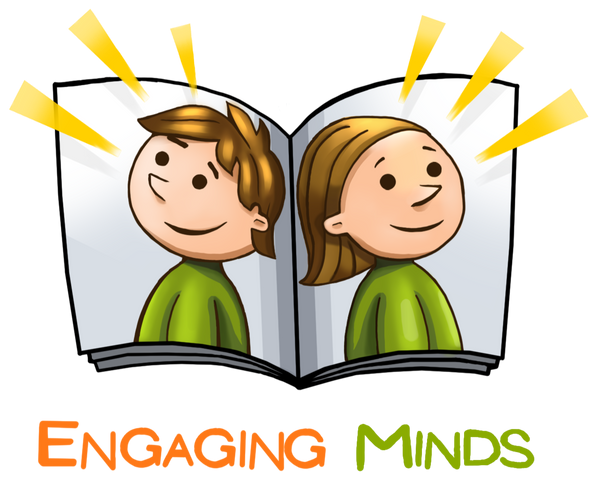Apologia
Young Explorer Series - Exploring Creation with Human Anatomy & Physiology
Young Explorer Series - Exploring Creation with Human Anatomy & Physiology
Couldn't load pickup availability
This is an elementary level Anatomy & Physiology book that gives glory to God as children discover all that goes on in their bodies from their heads to the nails on their toes!
Exploring Creation with Anatomy & Physiology Textbook
Exploring Creation with Anatomy & Physiology is a homeschool science course for elementary grades K-6 and part of our Young Explorer Series authored by Jeannie Fulbright. For over 11 years in a row, The Young Explorer Series has been voted the #1 homeschool science for elementary grades.
Exploring Creation with Human Anatomy and Physiology is an elementary level anatomy book that gives glory to God as children discover what’s going on inside their bodies! Take this in-depth journey into the anatomy and physiology of your body through Exploring Creation with Human Anatomy and Physiology by Jeannie Fulbright and pediatrician Brooke Ryan, M.D..
From the brain in your head to the nails on your toes, you and your students will encounter fascinating facts, engaging activities, intriguing experiments, and loads of fun as you learn about the human body and how to keep it working well.
Beginning with a brief history of medicine and a peek into cells and DNA, your students will voyage through fourteen lessons covering many subjects, such as the body systems: skeletal, muscular, respiratory, digestive, cardiovascular, nervous and more! They’ll study nutrition and health, how God designed their immune system to protect them, along with embryology and what makes them a unique creation of God.
As they work their way through the course, your students will enjoy adding the organs about which they learn to their own personalized human figure to be placed in their course notebook. In addition to all this exploration, your students will enjoy scientific experiments and projects, such as testing the bacteria content around the house, finding their blood type, creating a cell model from Jello and candy, and even building a stethoscope!
In keeping with the other books in the Apologia elementary science Young Explorer Series, the Charlotte Mason methodology is employed with engaging narratives, narration prompts and notebooking projects, all of which reinforce their learning using proven techniques that strengthen retention.
What Does Anatomy & Physiology Cover?
There are 13 lessons included in this one-year Anatomy & Physiology course. A detailed daily lesson plan is included in the Notebooking Journals.
Lesson topics include:
- The history of anatomy and physiology
- Cell anatomy, Cell membrane
- Mitochondria, Centrioles, Golgi
- The nucleus
- Cell creation
- DNA and RNA
- The Skeletal System
- The Muscular System
- The Digestive and Renal System
- Health and Nutrition
- The Respiratory System
- Blood
- The Cardiovascular System
- The Nervous System
- The Endocrine System
- The Senses
- The Integumentary System
- The Lymphatic and Immune Systems
- Growth and Development
-
And much more!
What Are Some of the Activities in This Anatomy & Physiology Course?
The activities and projects use easy-to-find household items and truly make the lessons come alive.
A sampling of the course projects include:
- Make an edible model of a cell
- Analyze a chicken bone
- Study muscle fibers
- Growing Muscle experiment
- Design a Digestion Theme Park activity
- Testing starch content in food
- Make a model of a lung and test lung capacity
- Make a diaphragm model to understand how the breathing process works
- And much more!
This Anatomy & Physiology course for elementary grades is packed with a variety of hands-on activities, experiments, and projects. These can be completed with household materials. You can view the complete list of lab supplies by viewing the sample here.
Anatomy & Physiology Notebooking Journal for Exploring Creation with Anatomy & Physiology
A perfect complement to Exploring Creation with Anatomy & Physiology, the Anatomy & Physiology Notebooking Journal provides everything your student needs to complete his study of Anatomy & Physiology. Not only does it include all the wonderful features of our other Junior Notebooking Journals in the Young Explorer Series, but it also includes as many additional activities, projects and experiments that can be completed in one day or less.
This Notebooking Journal will serve as your child’s individual notebook, providing a place for him to complete every assignment in the text. He will illustrate and record fascinating facts and information learned during each lesson, complete the notebooking assignments on specially designed templates, record experiments, activities and projects, complete vocabulary crossword puzzles, put together beautifully designed miniature books, and more!
The Benefits of Using the Notebooking Journal
Keeping a scientific notebook has always been standard scientific practice. Apologia’s Notebooking Journals have been designed to:
- Facilitate retention and provide documentation of your student’s education. The unique personal written and artistic expressions incorporate both sides of the brain
- Be flexible and allows for multilevel learning. A twelve-year-old student may write an essay and make an elaborate illustration, while a six-year-old may write one sentence with a stick-figure drawing
- Help students record experiences, observations, and thoughts
- Engage students in the scientific process
- Provide a written history that students can reference as they explore new subject areas
- Give your student a place where they can record and organize experiences and observations
-
Provides a place to review their notes to create opinions, and draw conclusions about the way their world works
What’s the Difference between the Notebooking Journal and Junior Notebooking Journal?
The regular Notebooking Journal for Exploring Creation with Anatomy & Physiology is recommended for use with students who have mastered handwriting, can take notes, and enjoy upper elementary level activities. The regular Notebooking Journals include the following features that are not in the Junior Notebooking Journals:
- Lengthy and technical Vocabulary Crosswords
- What Do You Remember? Written review questions
- Final Review section
The Junior Notebooking Journals are designed for younger students who are still developing basic writing skills. These journals have easier crossword puzzles and activities, easier crossword puzzles and activities, and wider writing lines.
The Notebooking Journals and Junior Notebooking Journals are designed to work together to help accommodate teaching multiple ages in your homeschool.
What Is Included in the Exploring Creation with Anatomy & Physiology Notebooking Journal?
In this Notebooking Journal, you will find:
- A Suggested Schedule for completing the readings, notebooking assignments, activities, and experiments utilizing a two-day per week plan
- Fascinating Facts templates for your student to record what he or she learned in each lesson, using both words and illustrations
- Creative templates for completing the notebooking assignments
- Review Questions for each lesson, which can be answered orally or in writing as a written narration
- Scripture Copywork, including both print and cursive practice, which is a valuable method for not only practicing handwriting but also memorizing Scripture and teaching spelling, grammar and writing
- Project Pages and Scientific Speculation Sheets for your student to use to keep records of experiments, projects, and activities completed throughout the course
- A selection of book and DVD suggestions to complement your student’s studies, as well as projects and experiments to help your student Dig In Deeper
- Beautiful, full-color, lapbook-style Miniature Books for your student to create, encouraging him or her to record facts and information learned in each lesson
- Field Trip Sheets your student can use to keep a record of field trips or outings enjoyed during his or her studies
- A Final Review with fifty questions to be answered either orally or in writing to show off all your student remembers and knows about Anatomy & Physiology
Your child will treasure his Notebooking Journal as he makes it his very own with words and illustrations, reflecting all he has learned in his pursuit of science. Additionally, the journal will serve as your record of your student’s scientific endeavors throughout the year. When your child flips through his notebook, he will be reminded of the knowledge he has attained as he peruses the pages he has created. A variety of activities include full-color mini-books, additional fun experiments, crosswords, and supplementary materials.
See the Apologia website for more details and sample pages
Share










